May 28, 2025 | 13:36 GMT +7
May 28, 2025 | 13:36 GMT +7
Hotline: 0913.378.918
May 28, 2025 | 13:36 GMT +7
Hotline: 0913.378.918

Catfish is Vietnam's flagship aquatic product, mainly cultivated in the Mekong Delta region to serve as raw material for exports. Photo: Kim Anh.
Despite lacking a competitive advantage in catfish aquaculture, many farmers in Hau Giang province have chosen this aquatic species for economic development over the past years. At the Dai Thang Aquaculture Cooperative in Dai Thanh commune, Nga Bay city, 42 households have been engaged in commercial catfish farming on a 25-hectare scale since 2006. During favorable production and market periods, local residents have achieved relatively high profits. However, starting from 2015 to 2016, catfish prices experienced fluctuations, dropping to low levels, resulting in continuous losses for the community.
Mr. Nguyen Tan Phong, Director of the Dai Thang Aquaculture Cooperative, explained that currently, the cooperative only has 22 members, with only a few remaining who continue to farm catfish. Most of the remaining farming areas have been left idle or converted to mixed fish farming.
According to statistics from the Department of Agriculture and Rural Development of Hau Giang province, the area dedicated to catfish farming in the province ranges from 70 to 100 hectares, and there are no plans to expand this area. Mr. Ngo Minh Long, Director of the Department of Agriculture and Rural Development of Hau Giang province, mentioned that given the existing farming areas, which are suitable for production, the agricultural sector encourages local farmers to continue maintaining and developing catfish farming in the upcoming seasons.
At the same time, fish farmers need to choose appropriate timing for breeding, and production activities must be interconnected to minimize risks. Engaging in isolated production, especially when the market fluctuates and prices drop, could have severe consequences for the farmers.
Currently, the specialized units of the Department of Agriculture and Rural Development of Hau Giang province are supporting local residents in obtaining area codes for farming, ensuring standards to facilitate export connections. Additionally, they are inviting businesses to participate in production partnerships and provide market outlets to resolve the marketing challenges faced by local farmers.
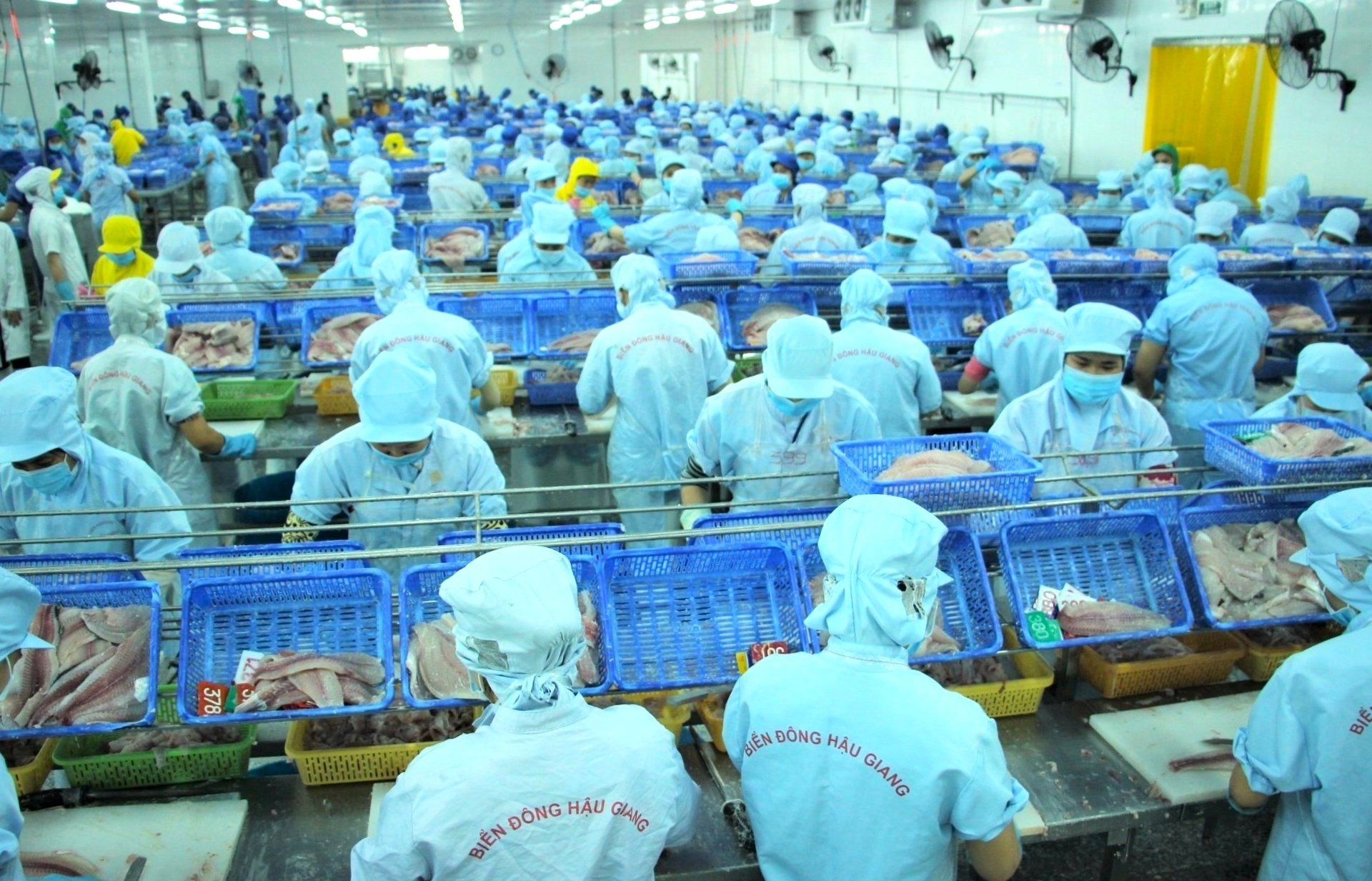
Catfish industry businesses aspire to enhance the quality of catfish to stimulate consumption, thereby providing incentives for both farmers and processing enterprises to achieve profitability. Photo: Kim Anh.
For Vinh Long province, out of a total of over 800 hectares of aquaculture water bodies, the area dedicated to catfish farming accounts for more than 43% (equivalent to around 345 hectares). In the 2023 farming season, the area with suspended ponds reaches 120 hectares, and the harvested output for the first six months of the year amounts to 42,000 tons, representing a decrease of nearly 4,000 tons compared to the same period in 2022.
Offering a solution to this issue, Mr. Nguyen Van Liem, Deputy Director of the Department of Agriculture and Rural Development of Vinh Long province, emphasizes that in catfish farming, disease prevention should be prioritized, and farmers need to ensure effective environmental management. This includes minimizing the use of prohibited substances for treatment, particularly antibiotics. Additionally, organizing production in a closely linked chain with farming areas and processing stages that serve export is crucial. The Department of Agriculture and Rural Development of the province will provide support and facilitate conditions for farming areas to adopt advanced standards such as VietGAP, GlobalGAP, and more.
From a business perspective, Mr. Vo Dong Duc, CEO of the Can Tho Seafood Import Export Joint Stock Company (Caseamex), affirms that the enterprise currently possesses all the necessary food safety certificates required by importing countries for Vietnamese catfish. Therefore, businesses must establish clean and quality-assured farming programs. Once market requirements are met, the key is to maintain market stability, as this is a prerequisite for competitiveness.
"We must strive for a more standardized approach to supply. At the same time, we should avoid price failure, as it will result in negative consequences for the entire industry," emphasizes Mr. Duc.
Echoing a similar viewpoint, Mr. Ngo Quang Truong, Director of the Bien Dong Seafood Limited Liability Company, expresses that the catfish industry need not seek additional markets but rather focus on raising the quality of catfish; optimistic consumption results will follow. The most effective solution must be found to ensure profitability for both farmers and processing enterprises.
At the recent conference on "Food Safety in the Production, Processing, and Promotion of Catfish Products," Deputy Minister of the Ministry of Agriculture and Rural Development Tran Thanh Nam once again highlighted that Vietnamese catfish is a "unique advantage," urging the need to elevate the value of this aquatic species. Given that there are now several countries engaged in catfish farming, the weakest point of the catfish industry at present is the lack of a unified voice. Unity, shared benefits, and risk-sharing are essential for the industry's success.

The Ministry of Agriculture and Rural Development is establishing a 3-level catfish supply chain, which includes a logistics supply chain directly at the source region, with places for goods aggregation, preliminary processing, deep processing, and export. Photo: Kim Anh.
Addressing the weaknesses in building the domestic catfish supply chain, the leadership of the Ministry of Agriculture and Rural Development asserts that constructing a 3-level catfish supply chain is necessary. This involves establishing a logistics supply chain right at the source region, with places for goods aggregation, preliminary processing, deep processing, and export.
"The weakest link remains the catfish supply chain. Localities need to strengthen their efforts to ensure food safety. I strongly encourage reputable businesses to collaborate with management units and localities to establish chains linked to farming areas, fish ponds, through cooperatives or cooperative groups in conjunction with enterprises, ensuring a stable supply and cost reduction," affirms Deputy Minister Tran Thanh Nam.
Translated by Nguyen Hai Long
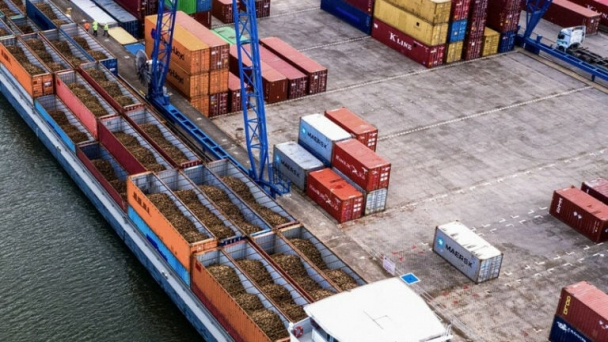
(VAN) The mutual export of agrifood products between the European Union (EU) and the United Kingdom (UK) must occur again without certification, border controls or other red tape. This was agreed at the UK-EU summit.
/2025/05/22/5121-2-173645_677.jpg)
(VAN) NBSAP Tracker identifies strengths and areas for improvement in the National Biodiversity Strategy, based on each region’s priorities and capacities.
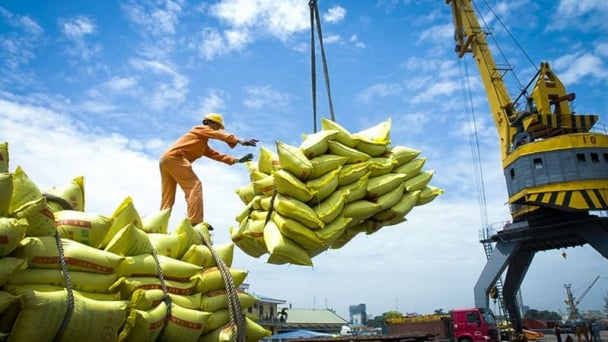
(VAN) The draft amendment to the Circular on rice export trading stipulates a periodic reporting regime for rice exporting enterprises.
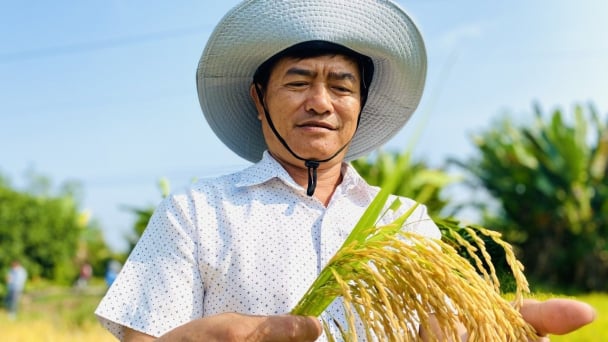
(VAN) Dong Thap farmers attained an average profit margin of 64% during the summer-autumn 2024 crop (first season), while An Giang and Kien Giang farmers followed with 56% and 54%, respectively.
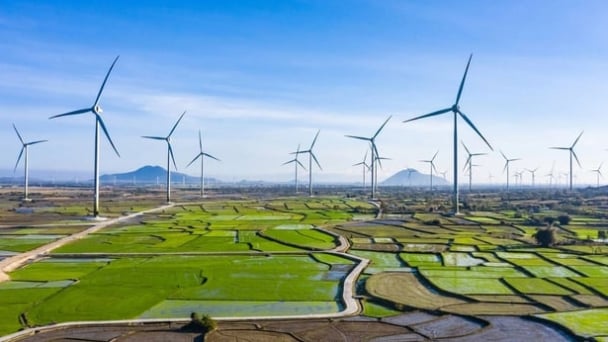
(VAN) As a doctoral student doing research on renewable energy and electrification at Harvard University, the author shares his musings on electricity, nature, and countryside memories.
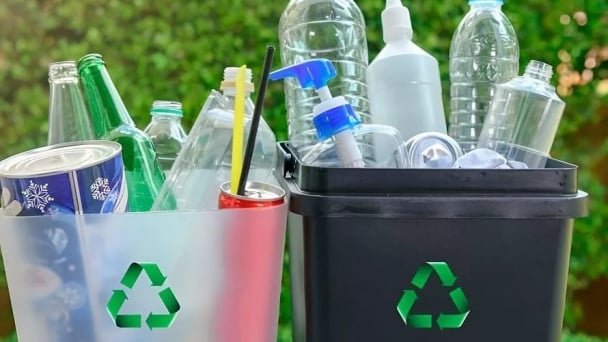
(VAN) The decree on Extended Producer Responsibility (EPR) ensures transparent management and disbursement of support funds, avoiding the creation of a “give-and-take” mechanism.
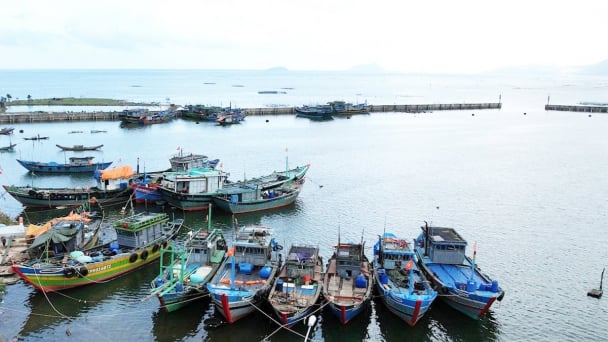
(VAN) Hue City rigorously enforces regulations regarding marine fishing and resource exploitation, with a particular emphasis on the monitoring of fishing vessels to prevent illegal, unreported, and unregulated (IUU) fishing.